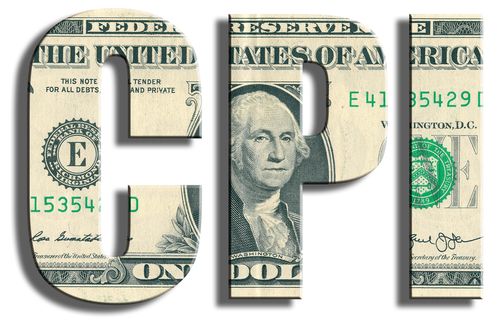Higher CPI leaves traders unfazed as US equities continue to build momentum
The latest US CPI reading hasn’t gone how the Federal would have hoped. Consumer prices came in higher than expected in February for the third month in a row.
All price information and forecast data in this article is sourced from Reuters
The latest US CPI reading hasn’t gone how the Federal would have hoped. Consumer prices came in higher than expected in February for the third month in a row. The price of goods and services is 3.2% higher than it was in February last year, a rise from the 3.1% seen in January. Core prices – which exclude volatile elements like energy and food – rose 0.4% month-over-month, for the second month in a row. Markets had been hoping the rate would drop to 0.3%. The yearly rate did manage to drop from 3.9% to 3.9%, but markets had been a tad more optimistic with expectations for a drop to 3.7%.
 Past performance is not a reliable indicator of future results.
Past performance is not a reliable indicator of future results.
All in all, the reading suggests that the disinflation process is proving to be stubborn in its final stage. This isn’t necessarily worrying, given that non-linearity within the return to the 2% target is not uncommon, but it does pour cold water on hopes that the Federal Reserve may start cutting rates soon. The market-implied probability of a rate cut in June is currently at 58%.
The inflation data is conflicting with the latest jobs data released last week. The key takeaway was that the tightness in the labour market is unwinding, with monthly wage growth coming in at the lowest level in two years, whilst the unemployment rate rose unexpectedly. By no means does it show a particular weakness in the US economy – wage growth is still above its long-term average – but it did validate the perception that the Federal Reserve could be starting to consider cutting rates soon.
Futures markets are currently pricing in 80 basis points of cuts in 2024, a significant drop from the 150 priced at the start of the year. Stronger data has eased expectations of immediate policy action from the Federal Reserve, but interestingly the stock market hasn’t suffered the consequences. Tuesday’s hotter CPI print is a good example of this as both the S&P 500 and the US Tech 100 ended the session higher, just inches away from the recent highs. There also no longer seems to be a “bad-data-is-good-rally” as evidenced by the lack of follow-through on Friday after the weaker jobs data. Right now, US equity markets seem to be moving higher slightly unfazed by the latest data.
This could be because traders are confident that they understand the path of monetary policy the Federal Reserve is on and are convinced that rate cuts are coming – even if it is a little later or slower than originally thought. It also helps that projected profits are holding up given the recent round of corporate earnings. Ultimately, markets don’t seem to mind higher rates if they are discounting higher profits. So, it seems like as long as rates don’t go higher, the momentum in stocks could remain bullish.
S&P 500 daily chart

Past performance is not a reliable indicator of future results.
All price information and forecast data in this article is sourced from Reuters